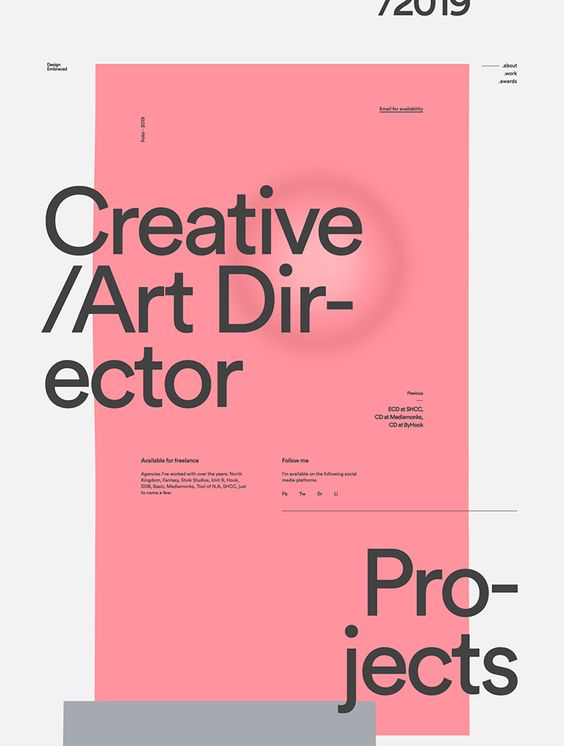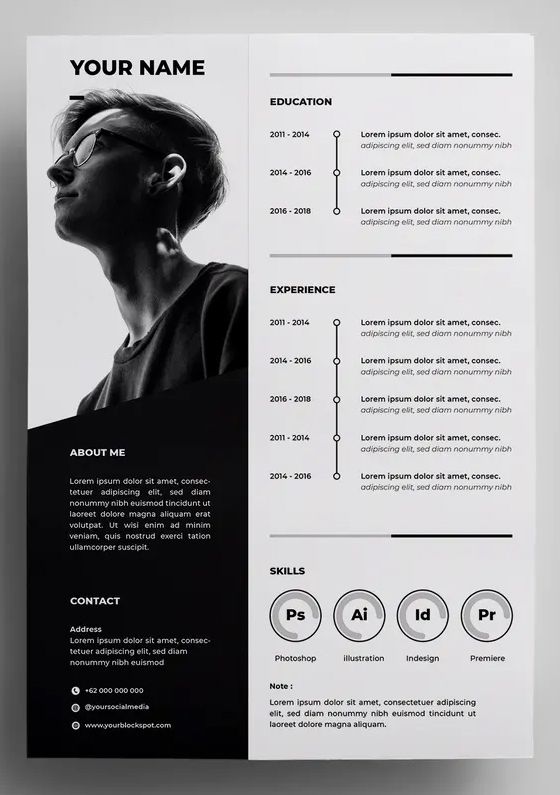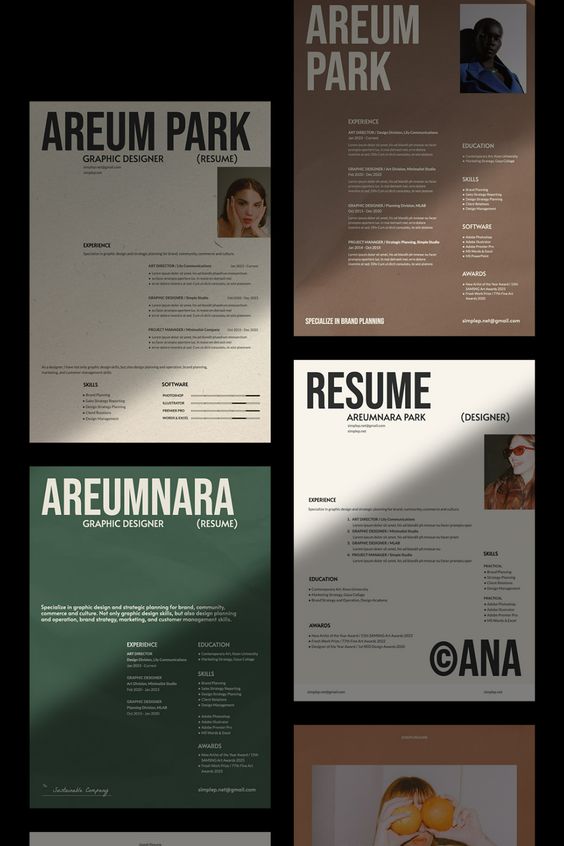Creating a standout graphic design portfolio is essential for catching the eye of potential clients and employers. To showcase your best work effectively, it’s crucial to pick pieces that highlight your unique style and skills. A well-curated portfolio acts as a visual resume, demonstrating your ability to handle diverse projects.


Your personal brand plays a key role in presenting your work. Each piece in your portfolio should align with your brand identity, reinforcing a consistent message. Pay attention to the layout and design of your portfolio; a cohesive and visually appealing presentation will enhance the impact of your work.
A digital presence is equally important. A well-organized online portfolio makes it easy for employers and clients to find you. Including supplemental materials, like case studies or client testimonials, can further validate your expertise and attract serious inquiries.
Key Takeaways
- Pick work that highlights your unique style and skills.
- Ensure your portfolio aligns with your personal brand.
- Maintain a well-organized online presence.
Establishing Your Personal Brand


Creating a personal brand is crucial for standing out in graphic design. Your brand should reflect your unique style, creativity, and narrative through your work.
Crafting a Unique Brand Narrative
A compelling brand narrative tells your story. This can include your journey, inspirations, and what sets you apart. Consider why you chose graphic design and what influences your work. Be sure to highlight key projects where your work shines.
List out achievements and how they reflect your growth. Use a consistent voice and tone across your portfolio. A great narrative connects emotionally with clients, making your work memorable and impactful.
Integrating Your Personal Style and Creativity
Showcase your unique style by curating your best illustrations and design projects. Pick pieces that best represent your creative approach. Your personal style should be clear and recognizable.

Consider the color schemes, typography, and layout you consistently use. Demonstrate versatility by including different types of projects, like logo designs, websites, and print media. This will show clients your talent and range.
Incorporate creativity into every aspect of your portfolio. From the design of the portfolio itself to the projects within, everything should reflect your individuality and skills.
Curating Your Best Work

Highlight a small selection of your best projects. This shows both variety and quality. Offer context and a story for each piece to engage viewers and explain your creative process.
Quality Over Quantity
A portfolio should prioritize quality over quantity. Select a few strong projects rather than many average ones. Each project should showcase exceptional skills and high-level thinking. Don’t overload the viewer. Three to five outstanding projects are enough to impress.
Highlighting your best work shows your strengths. It also keeps the portfolio focused and clear. Include only work that you are proud of and that represents your highest ability.
Selecting Projects That Showcase Skills and Versatility
Choose projects that demonstrate your range of skills and versatility. A good portfolio includes a mix of different types of work. This might mean logos, website designs, branding projects, or illustrations.
Each piece should display different talents. This shows that you can handle various types of design work. If possible, include projects that involve different media, like digital and print. This variety will strengthen your portfolio and highlight your adaptability.
Presenting Context and Storytelling


Context and storytelling are key to making a project stand out. Explain the problem you solved, your creative process, and the end result. This helps viewers understand your work in depth.
Write brief descriptions for each project. Share what the client’s needs were, your approach, and any challenges you faced. Use visuals to show your process from start to finish. This adds depth to your portfolio and makes your projects more memorable.
Demonstrating Your Design Skills

A strong portfolio shows a range of abilities including technical skills, problem-solving capabilities, idea development, and mastery of typography and layouts.
Highlighting Technical and Problem-Solving Skills


A well-rounded designer displays technical skills through their command of various design tools like Adobe Creative Suite, Sketch, or Figma. Show projects where you used advanced features, solved complex problems, or produced high-quality visuals.
Including before-and-after images or case studies can demonstrate your ability to tackle challenges and provide effective solutions. This goes beyond just showing the final product and helps exhibit your strategy and thought process.
Design Process and the Development of Ideas


Illustrate your design process by including sketches, wireframes, and prototypes. This shows how an idea evolves into a finished product. Break down your workflow from initial brainstorming sessions to final revisions.
Highlight specific phases like research, conceptualization, and testing. This reveals how you gather information, generate ideas, and refine them. Potential clients or employers want to see how you think and produce high-quality designs.
Mastery of Typography and Layouts
Effective use of typography and layouts sets a designer apart. Showcase your understanding of fonts, hierarchy, and spacing. Include projects highlighting different typographic styles and complex layouts.
Present examples where you balanced readability with aesthetic appeal. This can involve illustrating your use of grid systems, alignment, and white space. Proper use of these elements can significantly elevate the overall design quality.
Creating a Cohesive Portfolio Presentation

A compelling portfolio should be well-organized, visually appealing, and engaging. Paying attention to layout, interactive elements, and the inclusion of detailed case studies and personal projects can greatly enhance your presentation.
Layout and Flow Considerations
A clean, logical layout enhances the viewer’s experience. Start with a strong introduction that explains who you are and what you specialize in. Arrange your work in a way that tells a story, guiding the viewer seamlessly from one piece to the next.
Use consistent fonts, colors, and spacing to maintain a professional look. Grid-based layouts can help keep everything aligned. Break up large blocks of text with images or graphics to keep it engaging. Prioritize showcasing your best and most recent work prominently.
Interactivity and Dynamic Elements


Incorporating interactive elements can make your portfolio more engaging. Clickable thumbnails, hover effects, and animated transitions add a dynamic feel. For digital portfolios, consider using scroll animations or embedded multimedia like videos or GIFs.
Ensure that these elements do not distract from the work itself but enhance the viewing experience. Always prioritize usability and accessibility, making sure that all interactive features work smoothly across different devices and browsers.
Including Case Studies and Personal Projects
Adding case studies provides context and depth to your work. Detail the process behind each project, including initial concepts, development stages, and final outcomes. This gives insight into your problem-solving skills and creative process.
Personal projects can showcase your passion and self-motivation. Choose projects that highlight your unique style or areas where you want to grow. Including these shows a broader range of your abilities and interests, beyond client work.
Building Your Online Presence
A strong online presence is crucial for showcasing your graphic design work effectively. This includes optimizing your digital portfolio for ease of viewing, leveraging social media and design platforms, and employing SEO strategies to increase visibility.
Optimizing for Online Viewing
When crafting a digital portfolio or website portfolio, it’s essential to focus on user experience. Think about loading times; high-resolution images can be beautiful but might slow down your site. Compress images to balance quality and speed.
Navigation should be intuitive. Clearly label sections like “Projects” or “About Me”. Use a consistent layout to avoid confusing visitors.
Mobile optimization is equally important. Test your portfolio on various devices to ensure it looks good everywhere. Mobile users should have the same easy access as desktop users.
Utilizing Social Media and Design Platforms
Social media is a powerful tool for designers. Platforms like Instagram and Behance are great for displaying your work. Always post your best pieces and use relevant hashtags to increase your reach.
Engagement is key. Respond to comments and messages promptly. This builds a community around your work and can lead to opportunities.
Share your process through stories or posts. This not only showcases your skills but also helps potential clients understand your workflow.
Search Engine Optimization (SEO) for Designers
SEO helps potential clients find your website portfolio. Use keywords that are relevant to your work in titles, descriptions, and tags. For example, if you specialize in web design, use keywords like “web design”, “user experience”, and “UI/UX“.
Meta descriptions and alt text for images also improve SEO. Describe your images in the alt text to make them searchable.
Regularly update your site with fresh content. Blogs or news sections with updates on your latest projects can keep your portfolio active and improve your search rankings.
Supplemental Materials for Your Portfolio

A standout graphic design portfolio benefits greatly from supplemental materials. These additions provide a fuller picture of your skills and experiences.
Crafting a Professional Resume


Your resume should clearly highlight your skills, work experience, education, and achievements. Keep the format clean and easy to read. Use bullet points to list key responsibilities and accomplishments for each job.
Include your contact information at the top. Tailoring your resume to focus on relevant design experiences will catch the eyes of potential employers.
Here is a simple resume structure:
- Contact Information
- Name
- Phone number
- Email address
- LinkedIn profile
- Professional Summary
- Brief overview of your qualifications
- Experience
- Company name, job title, dates of employment
- Key responsibilities and achievements
- Education
- Degree, institution, graduation date
- Skills
- List of relevant design skills
Including Client Testimonials and Feedback
Adding client testimonials and feedback highlights your professionalism and reliability. Choose quotes that praise your work ethic, creativity, and ability to meet deadlines.
You can ask clients for permission to use their feedback and credit them properly. Placing these testimonials next to corresponding projects in your portfolio can make the client’s praise more impactful.
Example of a testimonial:
“Jane was outstanding in transforming our vision into reality. Her designs exceeded our expectations and her workflow was seamless.”
—— Client Name, Company.
Video and Multimedia Additions
Incorporating video and other multimedia elements can make your portfolio more engaging. Consider making short videos that showcase your design process, explaining the steps you took to complete a project.
Embed multimedia alongside static images to provide a richer understanding of your work. Ensure that videos are of high quality and that they load quickly to avoid frustrating viewers.
Use clear titles and descriptions for each piece of multimedia to guide the viewer. A well-executed video can give a dynamic view of your skills.
Some examples:
- Process videos: Show how you approached and solved design challenges.
- Animated graphics: Highlight your animation skills.
- Interactive elements: Allow viewers to engage with your designs.
Maintaining and Updating Your Portfolio


Keeping your portfolio fresh and relevant is crucial for showcasing your skills and adapting to changing trends. Consistency is key to maintaining a portfolio that stands out.
Regular Updates and New Additions
It’s important to regularly add new projects. This shows growth and keeps your portfolio up-to-date. Aim to include a variety of recent work that highlights your skills and creativity.
Make sure all pieces are high-quality. Remove outdated or less impressive projects. This keeps the portfolio neat and focused.
Having a schedule for updates can help. Mark specific times in your calendar for portfolio review and updates. This ensures consistency and keeps your portfolio current.
Adapting to Design Trends and Skills Growth


Stay informed about current design trends. This helps you keep your portfolio relevant. Incorporate popular styles that match your skills.
Showcase how your skills have grown. Include projects that demonstrate new techniques you’ve learned. This highlights your progress and ability to adapt.
Don’t just imitate trends. Add your personal touch to each piece. This shows your unique style and sets your work apart from others.
Engaging with the Design Community

Connecting with other designers and industry professionals helps to grow your career. It allows you to build relationships, get feedback, and find job opportunities.
Networking with Peers and Mentors
Networking is key. Build relationships with other designers by attending meetups, joining online forums, or participating in social media groups. Peers can offer advice, share resources, and collaborate on projects.
Mentors can provide deeper insights. Seek out mentors through industry events or professional organizations. They can share their experiences, guide your career path, and help improve your skills.
Create a list of networking events in your area or online. Be open to new connections and maintain those relationships.
Showcasing Your Work Through Competitions and Events
Participating in design competitions and events can greatly boost your profile. Competitions offer a platform to display your work and gain recognition. Winning or being shortlisted can attract attention from recruiters and potential clients.
Look for competitions that align with your skills and interests. Events like design fairs and exhibitions provide opportunities to network and showcase your portfolio. Prepare well and present your strongest work to make a lasting impression.
Join local and international design communities to stay updated on upcoming competitions and events. This involvement can lead to various opportunities.
Gathering Insights from Professionals and Recruiters
Learning from industry professionals and recruiters can provide valuable information about trends and job opportunities. Attend industry talks, webinars, and workshops where experienced designers share their knowledge.
Connect with recruiters at career fairs or via LinkedIn. They can offer guidance on what employers look for and how to make your portfolio stand out. Professionals can also provide feedback on your work, helping you to improve.
Stay active in professional organizations, forums, and online learning platforms. Regular interaction with industry experts ensures you stay informed and competitive.
Frequently Asked Questions


In this section, we address some common questions about creating an effective graphic design portfolio. The tips provided will help designers present their work in the best possible way.
How should you display your graphic design work in a portfolio?
Choose high-quality images to showcase your work. Organize your projects in a way that tells a story. Use clear, concise descriptions for each piece, highlighting the tools and techniques used.
What is the best format for a graphic design portfolio?
A digital format is often preferred. Websites, PDFs, and online portfolios are versatile and easy to share. Make sure the format you choose is user-friendly and accessible on various devices.
How to create a graphic design portfolio for a job application?
Tailor your portfolio to the job you are applying for. Include relevant projects that match the job description. Keep it concise, focusing on your best work. Include a professional resume and a brief introduction about yourself.
What are some common mistakes to avoid when creating a portfolio?
Avoid clutter and disorganization. Do not include every project you have ever done. Quality over quantity is key. Ensure there are no spelling or grammar errors. Do not use low-resolution images or poorly designed layouts.
What to include in a graphic design portfolio for university?
Incorporate both completed projects and works-in-progress to show your range and growth. Include personal projects, as well as assignments. Demonstrate your creative process, from initial sketch to final product.
How do I make my graphic design portfolio stand out?
Show your unique style and creativity. Include a variety of works to showcase your versatility. Add personal touches, like a unique layout or custom graphics. Make sure your contact information is easy to find.
- 1.5Kshares
- Facebook0
- Pinterest1.5K
- Twitter0
- Reddit0


